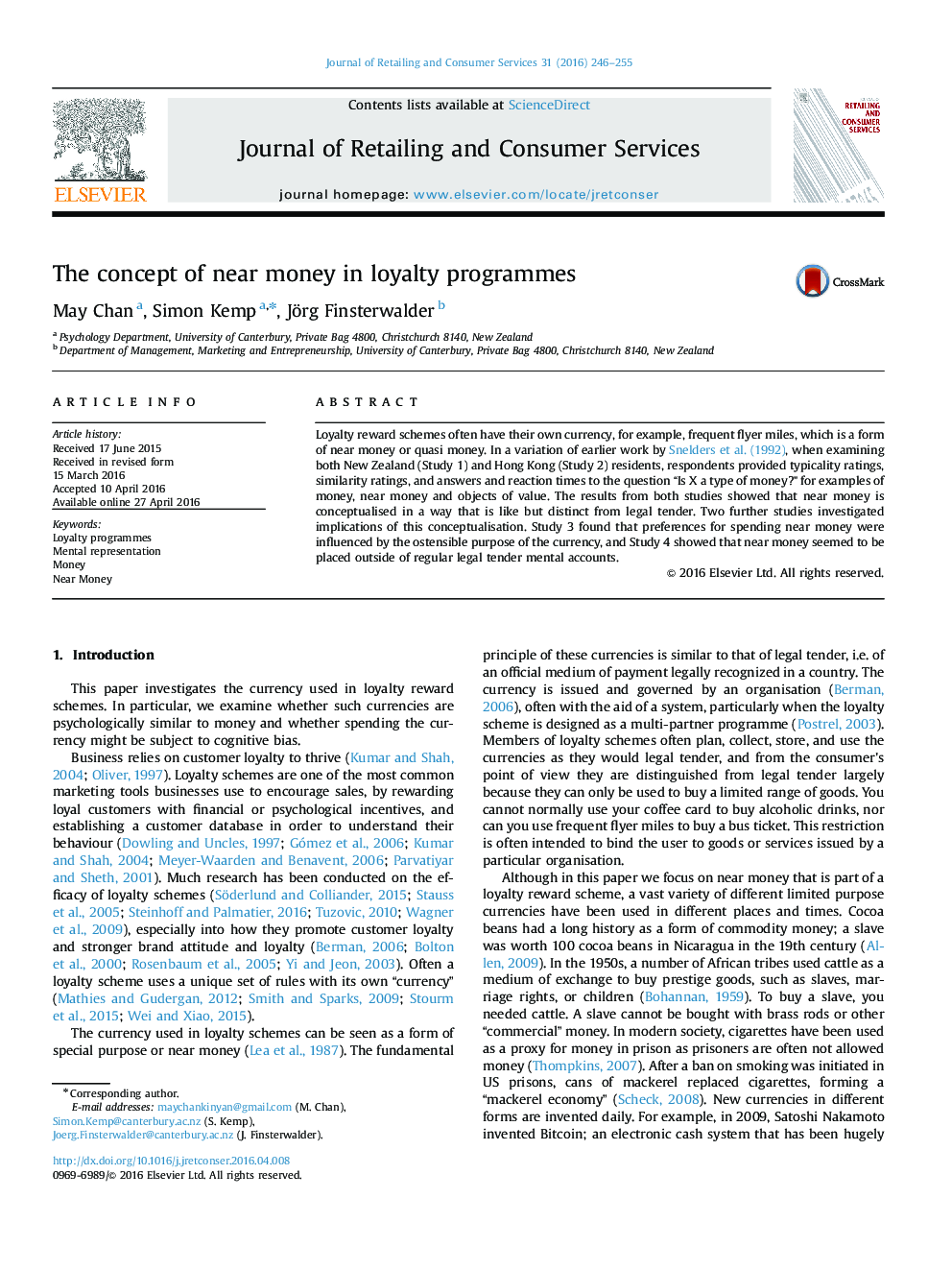| Article ID | Journal | Published Year | Pages | File Type |
|---|---|---|---|---|
| 1028756 | Journal of Retailing and Consumer Services | 2016 | 10 Pages |
•Two studies showed that “near money” , the reward currencies of loyalty programmes, is thought to be distinct from legal tender in both New Zealand and Hong Kong.•Preferences for spending near money were influenced by the ostensible purpose of the currency.•Near money appeared to exist in separate mental accounts to legal tender.
Loyalty reward schemes often have their own currency, for example, frequent flyer miles, which is a form of near money or quasi money. In a variation of earlier work by Snelders et al. (1992), when examining both New Zealand (Study 1) and Hong Kong (Study 2) residents, respondents provided typicality ratings, similarity ratings, and answers and reaction times to the question “Is X a type of money?” for examples of money, near money and objects of value. The results from both studies showed that near money is conceptualised in a way that is like but distinct from legal tender. Two further studies investigated implications of this conceptualisation. Study 3 found that preferences for spending near money were influenced by the ostensible purpose of the currency, and Study 4 showed that near money seemed to be placed outside of regular legal tender mental accounts.
